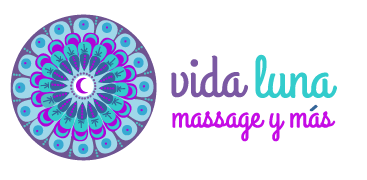There are various herbs which can be used for sexual health or as herbal aphrodisiacs. The ones listed here can be found in the Southwest region of North America or are readily available at Mountain Rose Herbs.
Damiana is a small shrub with aromatic leaves found on dry, sunny, rocky hillsides in south Texas, Southern California, Mexico, and Central America. Damiana leaves have been used as an aphrodisiac and to boost sexual potency by the native peoples of Mexico, including the Mayan Indians. The two species used in herbal healing, both of which are referred to as damiana, are Turnera aphrodisiaca and Turnera diffusa and are part of the passionflower family.
Historically damiana has been used to relieve anxiety, nervousness, and mild depression, especially if these symptoms have a sexual component. Damiana has also been traditionally used for increased energy, asthma, depression, impotence, digestion, and menstrual problems. In large doses it is thought to have a mild laxative effect.

Damiana Rose Elixir
2oz Damiana leaves
10 oz brandy
1/2 oz roses
5oz honey
Add Damiana , brandy & roses to a mason jar. Let steep for 4 weeks . Strain and add honey. Mix well and enjoy!
Muira Puama is one of the most active botanicals with a long history of traditional uses as an energy tonic, general health improver, and remedy for impotence & sexual insufficiency. It originated in the Amazon rainforest and is known as "potent wood" . Many people now consider it the new Yohimbe but, with considerably less possible side effects. Amazon natives have known this plant for centuries, as this herb has been widely used as an aphrodisiac by both men and women.

The short term effects of Muira Puama include increasing blood flow to the pelvic area, aiding erections in men as well as sensation and orgasm in women. Longer term use enhances the production of sex hormones in both sexes. It has no noted side effects though, as with many sexual stimulants, it can slightly raise blood pressure.
Muira Puama has also been used for stress management, nervous system stimulation, and for general overall health. It has been used to tonify the nervous system and to treat cases of mild exhaustion. It can also help with gastrointestinal and reproductive disorders, while it's anti-rheumatic properties have been used for treating stress and trauma.

Vanilla planifolia
Vanilla originated in Mexico and is presently found in South America and the West Indies. Vanilla is a member of the orchid family . It has aerial roots that cling to trees and, the pods are the fruit of the plant. Vanilla is currently hand pollenated since it has moved regions. It increases blood flow to sex organs, increases arousal, and releases tension in muscles and tissues. Vanilla tincture is a great sexual elixir since, it is stimulating and relaxing
Vanilla Tincture
5-7 vanilla beans
1 cup brandy or rum,
split vanilla beans (making sure the seeds make contact with alcohol)
add vanilla beans & alcohol to a mason jar & Steep for 6-8 wks
Strain and enjoy
Ocotillo -Fouquieraceae ocotillo family-fouquiera splendins
This succulent herb is also called coach whip, vine cactus, slimwood, candlewood, and flamingsword. It is a very beautiful and unusual plant. Ocotillo is slow growing, and it can take up to 30 years to grow to its maximum height of about 20 feet. Its growth is upright, radiating out from a central root.
Ocotillo usually flowers in March, April and May after heavy rains. Dark, gray green leaves will appear along its spiny, thorny stems within days after a rain fall, but once the weather drys out the leaves will turn brown and fall off. The flowers are beautiful scarlet red tubers appearing at the tip of the branches. These flowers attract hummingbirds, bats and orioles.

Ocotillo has a long history of use among many native Americans. The Cahuilla Indians used its flowers to make a summer drink and its seeds were pounded into a flour to make cakes. The Hualapai used the powdered roots in a footbath for swollen feet and the fibers of the plant to build huts. The Papago would press the nectar out of the blossom and allow it to dry into a candylike treat. The Apache Indians often used the reddish orange blossom, fresh or dried in a tea, which aided in the relief of sore and swollen muscles. The seeds and flowers were also eaten raw in various dishes.
A tincture made of fresh bark is useful for eliminating symptoms associated with inflammation of the pelvic region. Ocotillo can also be effective in alleviating hemorrhoids, prostate enlargements, and ovarian and uterine cysts.
Harvesting Ocotillo for medicinal use is a challenge. Wear thick gloves and take no more than a two foot section from older plants. It should saw or cut off fairly easily and then cut it into smaller, more workable pieces. Be careful of thorns while working with this plant, and separate the outer bark from the inner core.
Luna Wood , herbalist & massage therapist, makes many of these fresh herbal tinctures available for purchase at her studio at South Congress Massage.









